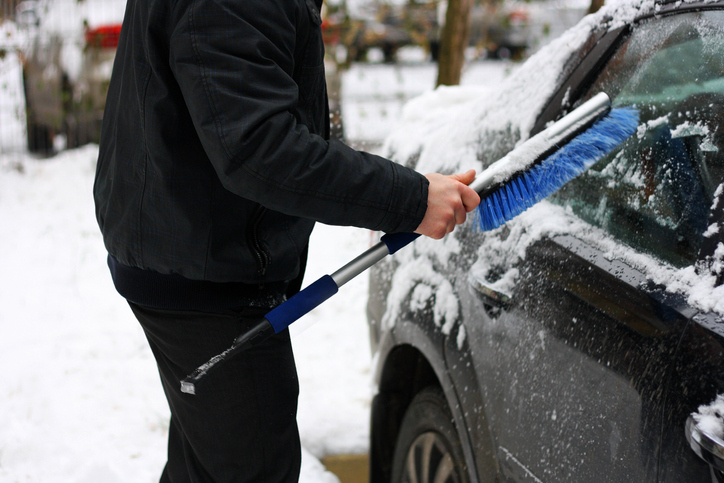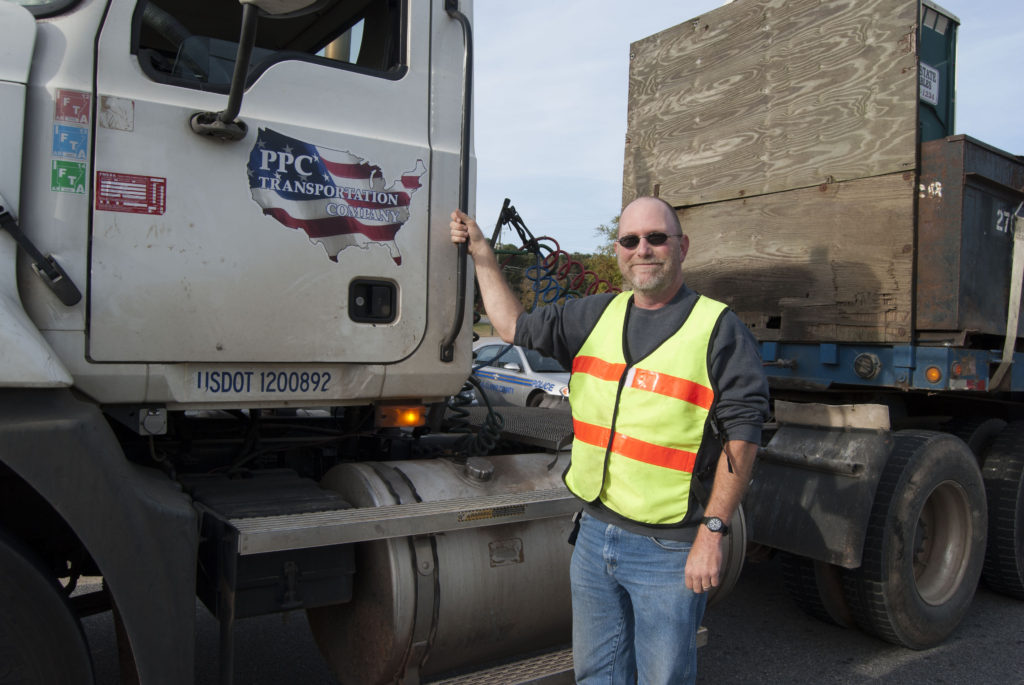

Part of staying safe on the road means being prepared. When the temperature drops, the safest thing to do is stay home during unsafe weather conditions. But knowing what to do in an emergency if you get stuck out on the roads could save your life.
UFCW Local 1996 member John Cunningham is a CDL driver at JBS/Pilgrim Pride of Athens with 26 years of professional commercial driving experience. With over 1.3 million miles of commercial driving during his career, John knows a thing or two about driving in adverse weather conditions.
Here are a few of his tips for a safer winter driving experience on snow or ice:
1) Stay home.
“First of all, if you don’t have to be out and about, DON’T go out. Stay home. Driving on ice and snow is treacherous for everybody, including those with experience driving on it.”
2) Pack an emergency kit.
“If you do decide to go out, make sure you have a few supplies in case something happens. This list can include but is not limited to: candy or peanuts, non perishable food, extra clothing, boots, a flash light, a full tank of gas if possible, at least a couple of blankets, and a bright piece of cloth or reflective cloth. This is just a partial list of things you may want to have on hand. There are more items that you could keep on hand. You can use your best judgment or look to the internet for suggestions.”
3) Take it slow.
“If you make it out on the road, drive slowly. During slick or icy conditions it does not pay to get in a hurry. Increase your following distance to at least twice, maybe three times, the distance it would be during ideal, dry conditions. Accelerate and decelerate slowly.”
4) Be extra careful on bridges.
“Bridges will inevitably freeze BEFORE the roadway. I start being wary when roads are wet and temperatures start getting around 34 degrees as I have seen bridges start to get slick around that temperature. If you can see ice forming on your mirrors, bridges are probably freezing with roadways not far behind.”
5) Don’t get cocky.
“Don’t get cocky in a 4 wheel drive or all wheel drive vehicle. They can give a driver a false sense of security when driving during these conditions.”
6) Keep your cool.
“If the rear of your car starts to slide, gently let off of your accelerator and turn your wheel in the direction of the slide to help correct the situation. Try not to panic as that can be one of the worst things you can do because you will not think clearly. Easy to say I know, but it can be done.”
In addition to John’s tips, AAA has a good list of safety precautions to take when winter weather hits:
AAA recommends the following winter driving tips:
- Avoid driving while you’re fatigued. Getting the proper amount of rest before taking on winter weather tasks reduces driving risks.
- Never warm up a vehicle in an enclosed area, such as a garage.
- Make certain your tires are properly inflated.
- Never mix radial tires with other tire types.
- Keep your gas tank at least half full to avoid gas line freeze-up.
- If possible, avoid using your parking brake in cold, rainy and snowy weather.
- Do not use cruise control when driving on any slippery surface (wet, ice, sand).
- Always look and steer where you want to go.
- Use your seat belt every time you get into your vehicle.
Tips for long-distance winter trips:
- Watch weather reports prior to a long-distance drive or before driving in isolated areas. Delay trips when especially bad weather is expected. If you must leave, let others know your route, destination and estimated time of arrival.
- Keep at least half a tank of gasoline in your vehicle at all times.
- If you become snow-bound, stay with your vehicle. It provides temporary shelter and makes it easier for rescuers to locate you. Don’t try to walk in a severe storm. It’s easy to lose sight of your vehicle in blowing snow and become lost.
- Don’t over exert yourself if you try to push or dig your vehicle out of the snow.
- Tie a brightly colored cloth to the antenna or place a cloth at the top of a rolled up window to signal distress. At night, keep the dome light on if possible. It only uses a small amount of electricity and will make it easier for rescuers to find you.
- Make sure the exhaust pipe isn’t clogged with snow, ice or mud. A blocked exhaust could cause deadly carbon monoxide gas to leak into the passenger compartment with the engine running.
- Use whatever is available to insulate your body from the cold. This could include floor mats, newspapers or paper maps.
- If possible run the engine and heater just long enough to remove the chill and to conserve gasoline.
Tips for driving in the snow:
- Accelerate and decelerate slowly. Applying the gas slowly to accelerate is the best method for regaining traction and avoiding skids. Don’t try to get moving in a hurry. And take time to slow down for a stoplight. Remember: It takes longer to slow down on icy roads.
- Drive slowly. Everything takes longer on snow-covered roads. Accelerating, stopping, turning – nothing happens as quickly as on dry pavement. Give yourself time to maneuver by driving slowly.
- Know your brakes. Whether you have antilock brakes or not, the best way to stop is threshold breaking. Keep the heel of your foot on the floor and use the ball of your foot to apply firm, steady pressure on the brake pedal.
- Don’t stop if you can avoid it. There’s a big difference in the amount of inertia it takes to start moving from a full stop versus how much it takes to get moving while still rolling. If you can slow down enough to keep rolling until a traffic light changes, do it.
- Don’t power up hills. Applying extra gas on snow-covered roads just starts your wheels spinning. Try to get a little inertia going before you reach the hill and let that inertia carry you to the top. As you reach the crest of the hill, reduce your speed and proceed down hill as slowly as possible.
- Don’t stop going up a hill. There’s nothing worse than trying to get moving up a hill on an icy road. Get some inertia going on a flat roadway before you take on the hill.
- Stay home. If you really don’t have to go out, don’t. Even if you can drive well in the snow, not everyone else can. Don’t tempt fate: If you don’t have somewhere you have to be, watch the snow from indoors.
